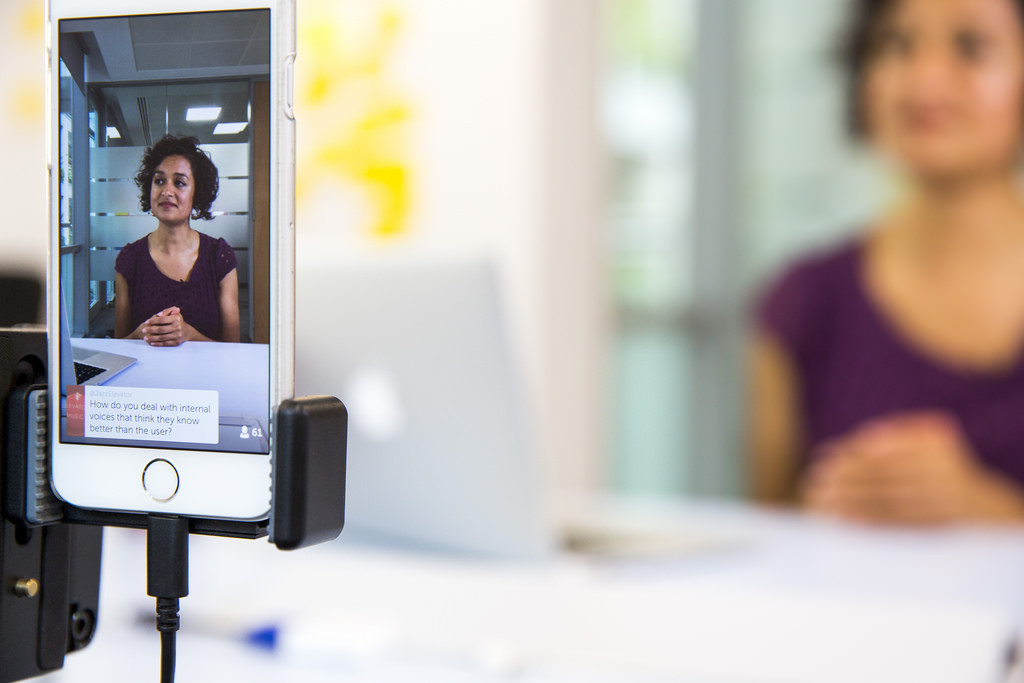
Streaming video is nothing new, and TV stations frequently feature live coverage of news conferences and events on their websites. But today’s viewers aren’t spending all their time checking their local affiliate’s page for new stories. A recent Pew Research Center report shows half of Facebook and Twitter users obtain news from those sites.
Of the most popular social networks, Twitter has the highest percentage of news consumers in the 18-29-years age bracket popular with advertisers. Roughly 45% of news consumers on the network fall in this age range vs. 39% of news consumers on YouTube and 34% on Facebook. Twitter also has the most even distribution of genders, with an exactly fifty/fifty division of news consumers. Simply put social media can prove to be a rather powerful tool in measuring viewer impact.
Where do Meerkat and Periscope fit in?
Given Twitter’s advantages in the social media news sphere, it’s no wonder that two new live-streaming apps, Meerkat and Periscope, have been introduced for the network. After downloading the app, you open it and follow a few steps to start a live broadcast for your followers. While this is attractive to many individuals who see themselves as the next viral video sensation, it’s also useful for broadcast journalists.
Meerkat vs. Periscope
Both apps are similar, but Twitter now owns Periscope, and has put an effort into making it distinctive. Interestingly, the Periscope app is more independent of Twitter than Meerkat—likes and comments are confined to the app, while with Meerkat all app engagement is posted on the user’s Twitter account. Periscope also makes it easier for latecomers to enjoy a live-streaming event by allowing you to save your video file after you finish streaming.
Both apps encourage followers to ask questions, comment and engage both with each other and with the live stream’s poster. This presents several unique opportunities for broadcast journalists.
Live Coverage of Events That Don’t Warrant Breaking Into Programming
Most TV journalists cover news conferences, crimes, accidents, and other news with the intention of making a package to air during the evening news. Often stations will go live “at the scene” during the five, six, or ten o’clock news, only to show a reporter standing in an empty parking lot and explaining what happened there three hours ago. This is usually an overzealous attempt to remind viewers that the station is dedicated to delivering the most up-to-date news about a particular subject.
The fact that these kinds of after-the-fact live shots are less than stunning actually has nothing to do with the TV station’s dedication to covering news quickly. In most cases, the reporter and crew were at the scene of whatever happened three hours ago and captured plenty of video. They could have gone live then, but when you interrupt Dr. Phil or The Ellen DeGeneres Show for a press conference about a minor local official resigning or a convenience store robbery, viewers tend to call and complain. Generally speaking, unless your viewers are at risk of being killed by a tornado, or the POTUS’ plane just landed in your city, most news should be covered during regularly scheduled news broadcasts.
But Don’t Viewers Want Instant News Coverage?
Isn’t that why 24/7/365 news coverage on cable networks like CNN, MSNBC, and Fox is so popular? Well, yes and no. Some viewers want to watch some breaking news as soon as it happens; others would rather keep watching Dr. Phil. Social media in general has helped provide a compromise—your viewers can keep watching their favorite daytime talk show or prime-time sitcom while skimming a breaking local story your station just posted on Facebook or Twitter.
New Opportunities for Live Coverage of Local News
With Meerkat or Periscope, local TV stations can give their viewers more options. You can live-stream local news events like press conferences, accidents, and crime scenes, then later pack the story to run during the five o’clock news. Viewers can watch an entire press conference from the mayor’s office live, or just catch 60 seconds of highlights on the evening news, depending on their level of interest.
Making the Best Use of New Apps
The fact that you can now go live from the scene of every event doesn’t mean that you should. Yes, you could live-stream the weekly school board meeting, but Twitter is a fast-paced social medium, and its users are easily bored. If you struggle to keep your eyes open at the local school board meetings, chances are your audience will, too.
In general, it’s best to avoid streaming routine government meetings; if you’re attending them anyway, you can always open a live-stream if things get interesting. When covering outdoor events, it’s best to stop streaming if you’re just panning the crowd; start streaming when you’re interviewing an attendee or the event’s organizer.
Also avoid repeating yourself incessantly in an effort to keep the live-stream going. This isn’t live television—you don’t have to fill time until the next commercial break. One complaint that many people have about 24/7 news networks on cable is the lack of new news—much of what you see is an anchor or reporter repeating the same three known facts about a story a hundred different ways, or dissecting the same 30 seconds of video for hours. (Keep in mind, in local news—especially small markets—the stories you cover may be far less important and interesting than the events reported on national news.)
If you are live-streaming from the scene of a crime or accident, state the facts, interview any relevant parties, then end it. If something new happens, you can open an update stream. It’s also helpful to designate one person at the station to monitor engagement with live-streams on Meerkat or Periscope—if one stream is blowing up with comments, that might warrant keeping it on longer. If another stream has almost no engagement, cut if off sooner.
[su_note]Learn more about the School of Broadcast Journalism at the New York Film Academy by clicking here.[/su_note]